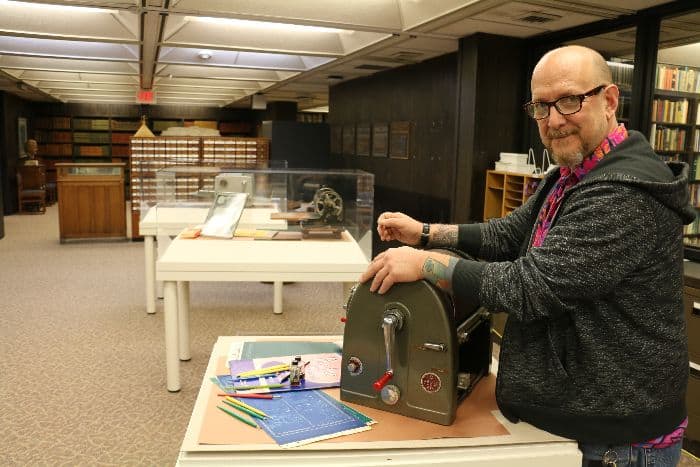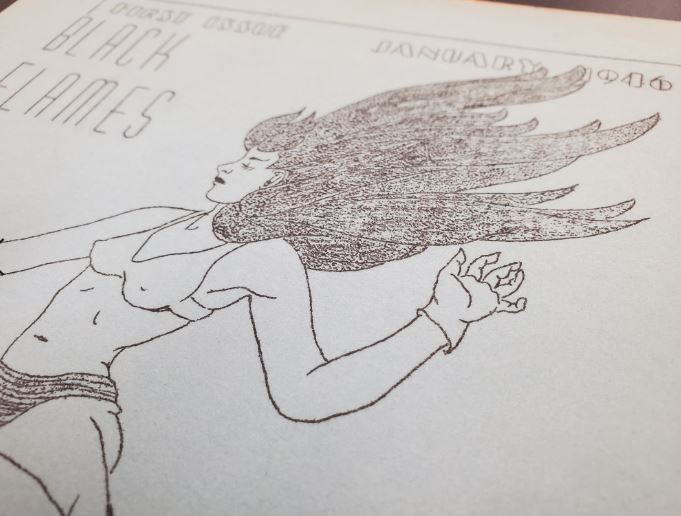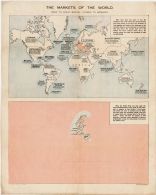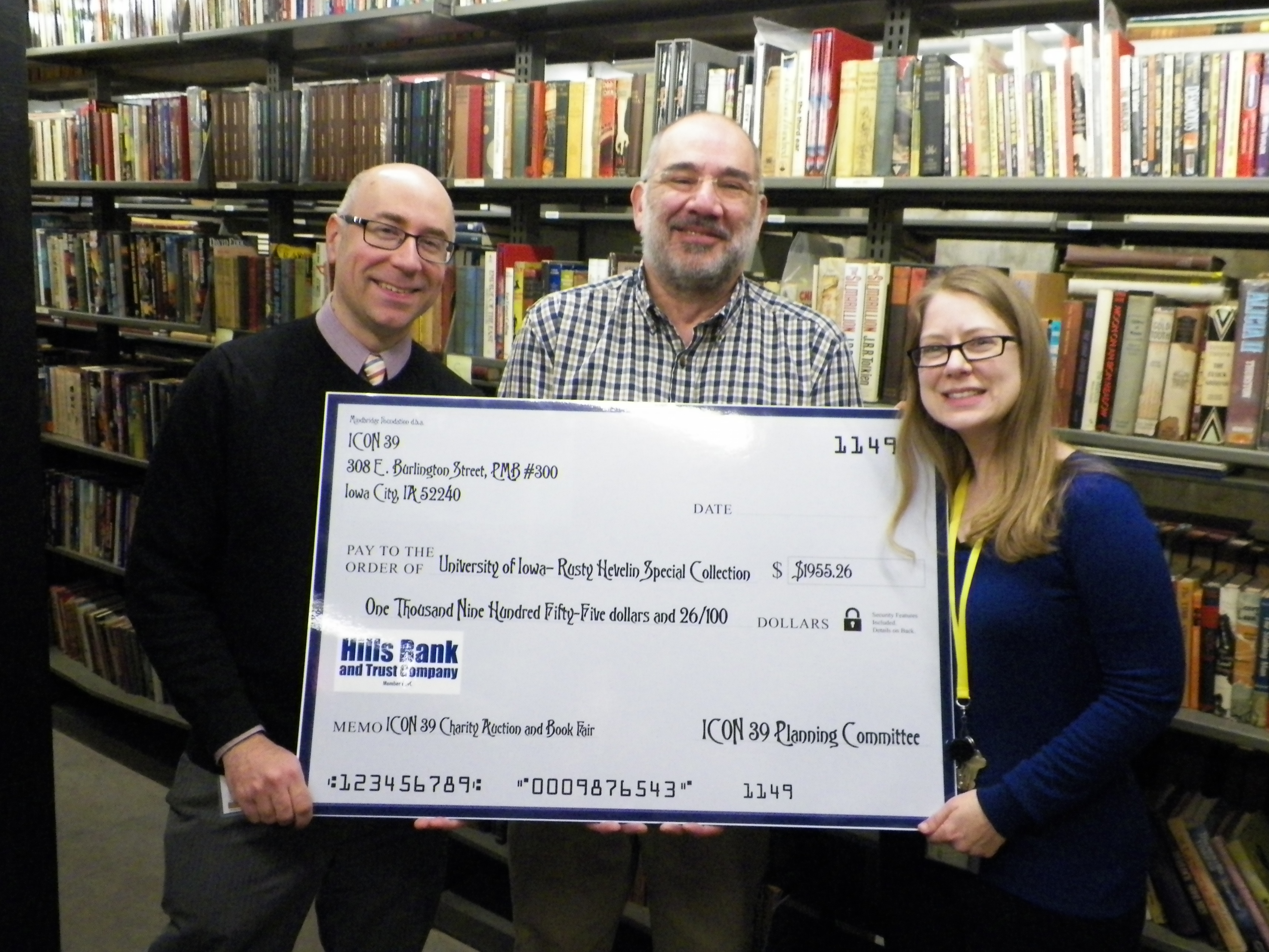The following was written by Olson Graduate Assistant Rich Dana, and curator of the Spirit Duplicators exhibit in Special Collections & Archives reading room During my three and a half years at Special Collections, I have worked with an amazing range of materials, but my major projects have focused on first, the James L. “Rusty”Continue reading “Spirit Duplicators: Early 20th Century Copier Art, Fanzines, and the Mimeograph Revolution”
Tag Archives: hevelin collection
Science Fiction’s Forgotten Femfanzines
“From the Classroom” is a series that features some of the great work and research from students who visit our collections. Below is a blog by Michael Willis from Dr. Jennifer Burek Pierce’s class “History of Readers and Reading” (SLIS:5600:0001) Science Fiction’s Forgotten Femfanzines By Michael Willis Black Flames emerged from the recesses of theContinue reading “Science Fiction’s Forgotten Femfanzines”
UI Special Collections claims the Iron Throne at World Con
By Hannah Hacker Last month on August 17-21, two of our very own, Peter Balestrieri and Laura Hampton, went to represent the University of Iowa Libraries at the 74th World Science Fiction Convention, Mid AmeriCon II, in Kansas City, Missouri. Some may wonder what a couple of Special Collections librarians were doing at aContinue reading “UI Special Collections claims the Iron Throne at World Con”
News and Updates from Special Collections 11/13/2015
Recently Cataloged Two carts of 1930s-2000s science fiction books from the James L. “Rusty” Hevelin Science Fiction Collection have recently returned from the Cataloging-Metadata Department. Among these are hardcover and paperback books as well as magazines and periodicals. Included are works by Isaac Asimov, H.P. Lovecraft, Frank Herbert and more. Use the keyword “Hevelin” inContinue reading “News and Updates from Special Collections 11/13/2015”
News from Special Collections 10/6/2015
Staff Changes Our beloved Department Manager Kathy Hodson has retired after more than 16 years of dedicated service to the UI Libraries. Friday, October 2, 2015 was her last day. Please join us in wishing her the best for all of her new pursuits. New Acquisitions Brochard. Musæum selectum. Paris 1729 OneContinue reading “News from Special Collections 10/6/2015”
Special Collections Week in Review, 8/28 – 9/4, 2015
Recently on the Web and Social Media: The Hevelin Fanzine Digitization Project was featured on The Verge. The University of Iowa Libraries is digitizing science fiction fanzines from the 1930s-1950s. August Old Gold column from University Archivist David McCartney, Harrison Hall, the Residence Hall That Never Was. The planned 1,100-student high-rise,Continue reading “Special Collections Week in Review, 8/28 – 9/4, 2015”
Science Fiction Fans Raise $1,955 To Support Hevelin Collection Digitization
Every year at the ICON Science Fiction convention in Cedar Rapids the organizers collect fan created artwork, crafts, and donated memorabilia which are auctioned off to support charities and projects. Last fall, the chosen project was The University of Iowa Libraries’ initiative to digitize the James L. “Rusty” Hevelin Science Fiction collection, an especially meaningful choiceContinue reading “Science Fiction Fans Raise $1,955 To Support Hevelin Collection Digitization”
Rusty, Rustebar, Rust E. Barron
The James L. “Rusty” Hevelin Collection of Pulps, Fanzines, and Science Fiction Books in the Special Collections of the University of Iowa Library is a manifestation of fandom, a subculture of shared interest, networking, and activity that grows up around almost any subject. Fandom demands more of its participants than merely liking something; they mustContinue reading “Rusty, Rustebar, Rust E. Barron”





